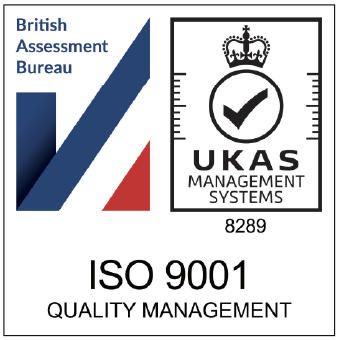Are you hoping to significantly grow your eCommerce business in 2023? Then there’s one particular skill that can help you achieve this – demand forecasting. To find out more about demand forecasting and how to apply it in your business, keep reading…
What is eCommerce demand forecasting?
eCommerce demand forecasting refers to the process of predicting future demand for your products.
Demand forecasting can cover your entire inventory, be it products which you’ve been selling for years, or new products that you’re thinking about stocking.
It’s possible to create a demand forecast using a number of sources, however the most common source of data is historical sales records – which are typically drawn from an eCommerce business’ order management system.
Why is eCommerce demand forecasting important?
As you’ll be aware – running an eCommerce business, particularly one that is growing or at scale – is a complex, challenging affair.
Not only are you likely to have lots of inventory to deal with, but you’ll have the challenge of fulfilling orders to different parts of the country, dealing with supply chain disruptions and more.
Not to mention your competitors! Today’s eCommerce industry is becoming more competitive than ever. You not only have to compete with the giants such as Amazon, but a continual influx of new start-ups too.
That all adds up to a scenario where the answer is demand forecasting.
Demand forecasting can help you to avoid the mistakes that can result in your customers going elsewhere and your business failing to grow.
The types of mistakes that demand forecasting can help you avoid, include:
- Running out of stock during peak sales periods, losing you valuable customers.
- Overspending on inventory that doesn’t sell – leaving you with valuable capital tied up in stock.
- Struggling with cash flow as a result of capital being tied up in slow moving items of inventory.
- Having to spend too much on overheads due to incorrect inventory allocation.
What are the different types of eCommerce demand forecasting?
Depending on the scale of your eCommerce business, the retail niche you work in, and the markets you serve, different types of eCommerce demand forecasts will be more suitable for you.
Below, we’ve detailed some of the most common types of eCommerce demand forecasting by level and time.
Macro-level
A macro-level demand forecast examines future demand in the broadest possible way.
This type of forecast examines the wider market and economic conditions in which an eCommerce business is operating. Such a forecast will consider things like inflation, consumer confidence, government fiscal policy and more.
Because macro-level demand forecasts are so broad – and encompass so many varying factors – they are more suited to larger businesses which are able to fund this level of market research.
Micro-level
A micro-level demand forecast is one that takes a ‘deep-dive’ into an individual eCommerce company’s operations and performance.
This type of demand forecast understands that individual eCommerce firms can do very little to influence macro factors, and instead focuses on things that a firm can influence.
Factors that will be taken into account in a micro-level demand forecast include past sales performance of key categories, profit margins of individual items, and the cost of production and cash flow and how these things impact inventory.
Aside from demand forecasts that take either a broad or very narrow view, there are also demand forecasts that look at differing lengths of time. These are short-term and long-term demand forecasts.
Short-term
As the name suggests, a short-term demand forecast looks at potential demand over a shorter period of time – typically looking at a three to 12-month period.
Short-term demand forecasts are particularly good for businesses that are affected by seasonality. For example, if you sell tents and outdoor equipment, a forecast will look ahead to the next summer – having looked at the previous summer’s sales data to determine how much stock will be needed.
Long-term
A long–term demand forecast will normally attempt to anticipate demand anywhere from 12 months to three years ahead.
One of the major reasons for conducting a long-term demand forecast is to determine whether you should introduce new products and product lines into your business. Likewise, a long-term demand forecast will examine whether your business needs to adopt new sales channels.
Because this type of forecast is covering a longer period of time, it’s better able to observe changes in consumer purchasing habits and trends.
For example, if you’re thinking about social commerce (e.g. selling directly to consumers through platforms like TikTok and Instagram), then a long-term forecast can help you determine whether this will be a worthwhile investment or not.
How to conduct a demand forecast for your eCommerce business
As you have read so far, conducting a demand forecast is certainly a worthwhile exercise for the majority of eCommerce brands. But, if you want to conduct one, what are the next steps?
Select targets
Before you dive in and start pulling months and years of sales data from your systems, you should first set some targets; in other words, think about the questions you want the forecast to answer.
Once you’ve identified these questions and targets, you can start crafting a forecast that actually helps to answer them.
Collect and save data
The foundation of any successful forecast is good, clean, accurate data. If you’re going to effectively answer the questions you set out earlier, you’re going to need the data that’ll provide the answers.
The most important data for your forecast will be your sales data. Accessing this data is usually as straightforward as downloading it from your CRM or order management platform.
Remember, though, that a good forecast will also look at wider trends – including competitors, the wider market, the economy – so remember to include some of this data from outside your business.
Data analysis
Once you’ve gathered all of your data, it’s time to analyse it.
If you’re a smaller eCommerce company, then it should be possible to do this manually, using spreadsheets and charts to identify key sales/demand trends.
However, if you’re a very large eCommerce company, it’s likely that you’ll need to call in the services of a professional data analyst to help you manipulate and handle the data to yield useful insights and trends.
Ongoing adjustments
Having completed your forecast, you want to make sure it doesn’t sit on a shelf gathering dust.
Instead, you want to put your money where your mouth is, and start implementing changes within your business based on the forecast.
So, if your forecast indicates falling demand for a particular line of products, make sure your reorder points are changed so that you keep less of that particular item in stock.
Implementing your forecast can certainly be daunting, but the other option – working based on sheer guesswork – is far worse!
Ensure your inventory and fulfilment is on point with 3PL
You may have created the finest demand forecast in the world, but if you struggle to manage your inventory and process and fulfil orders efficiently, you may as well not have a forecast!
If you’re struggling to stay on top of your inventory and fulfilment, then why not consider outsourcing it to an expert third-party logistics business like 3PL?
We take away the hassle of managing your own inventory and fulfilment so that you can focus on what you do best – marketing and selling your awesome products!
Sounds interesting? Then speak to 3PL today and our friendly experts will be able to answer all of your questions!
Find out more about 3PL’s eCommerce fulfilment services now
For more eCommerce fulfilment, logistics and shipping advice, read the 3PL blog…
How Can Outsourcing to 3PL Help Your Business Cut Costs? | How to Choose the Best eCommerce Fulfilment Service for Your Business | Everything You Need to Know About D2C eCommerce Fulfilment
Speak to 3PL about your eCommerce order fulfiment
It’s time to supercharge your ecommerce brand business and overtake your competitors. Speak to 3PL today and find out how we can take your ecommerce fulfilment to the next level.


